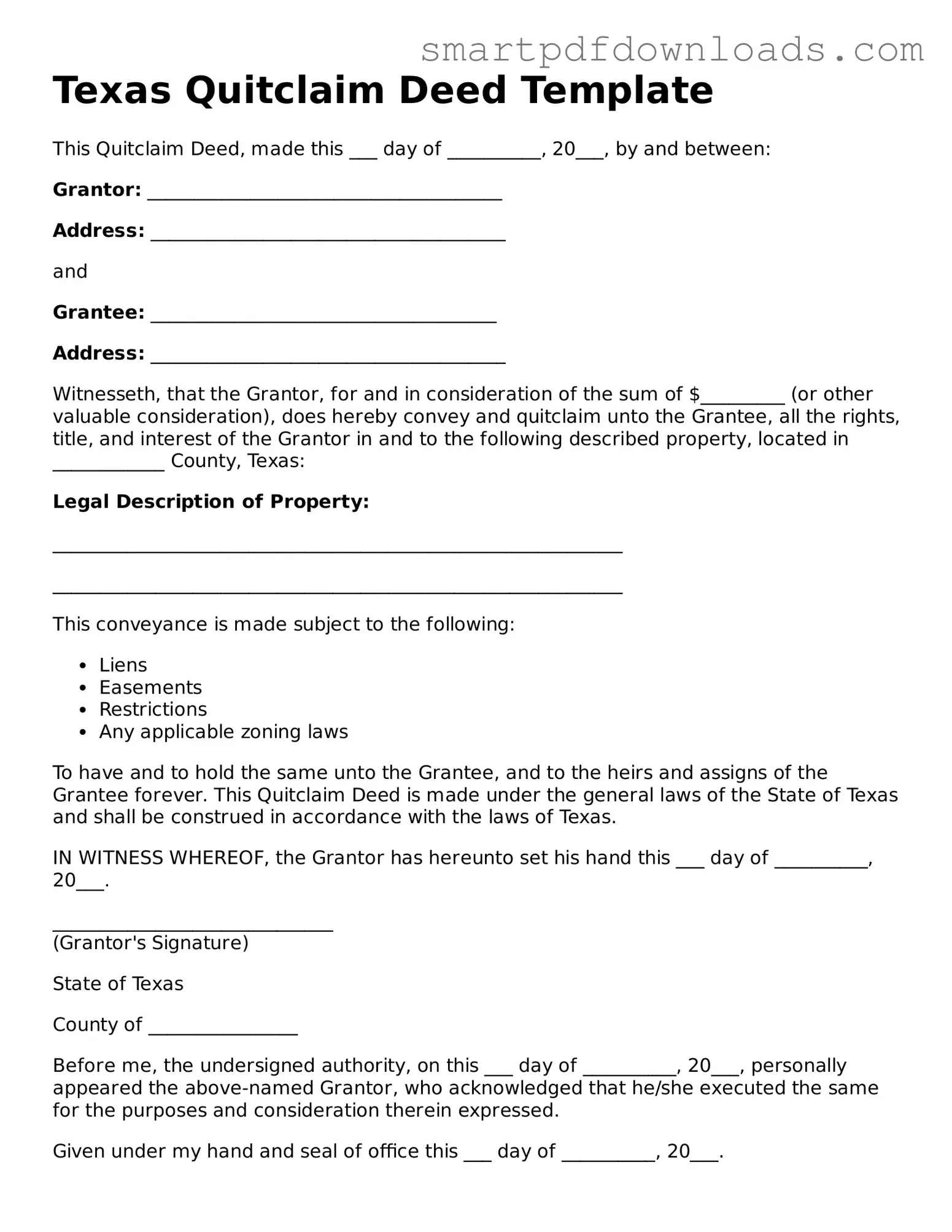Texas Quitclaim Deed Template
This Quitclaim Deed, made this ___ day of __________, 20___, by and between:
Grantor: ______________________________________
Address: ______________________________________
and
Grantee: _____________________________________
Address: ______________________________________
Witnesseth, that the Grantor, for and in consideration of the sum of $_________ (or other valuable consideration), does hereby convey and quitclaim unto the Grantee, all the rights, title, and interest of the Grantor in and to the following described property, located in ____________ County, Texas:
Legal Description of Property:
_____________________________________________________________
_____________________________________________________________
This conveyance is made subject to the following:
- Liens
- Easements
- Restrictions
- Any applicable zoning laws
To have and to hold the same unto the Grantee, and to the heirs and assigns of the Grantee forever. This Quitclaim Deed is made under the general laws of the State of Texas and shall be construed in accordance with the laws of Texas.
IN WITNESS WHEREOF, the Grantor has hereunto set his hand this ___ day of __________, 20___.
______________________________
(Grantor's Signature)
State of Texas
County of ________________
Before me, the undersigned authority, on this ___ day of __________, 20___, personally appeared the above-named Grantor, who acknowledged that he/she executed the same for the purposes and consideration therein expressed.
Given under my hand and seal of office this ___ day of __________, 20___.
__________________________________
(Notary Public Signature)
__________________________________
(Print Name of Notary Public)
My Commission Expires: ________________
